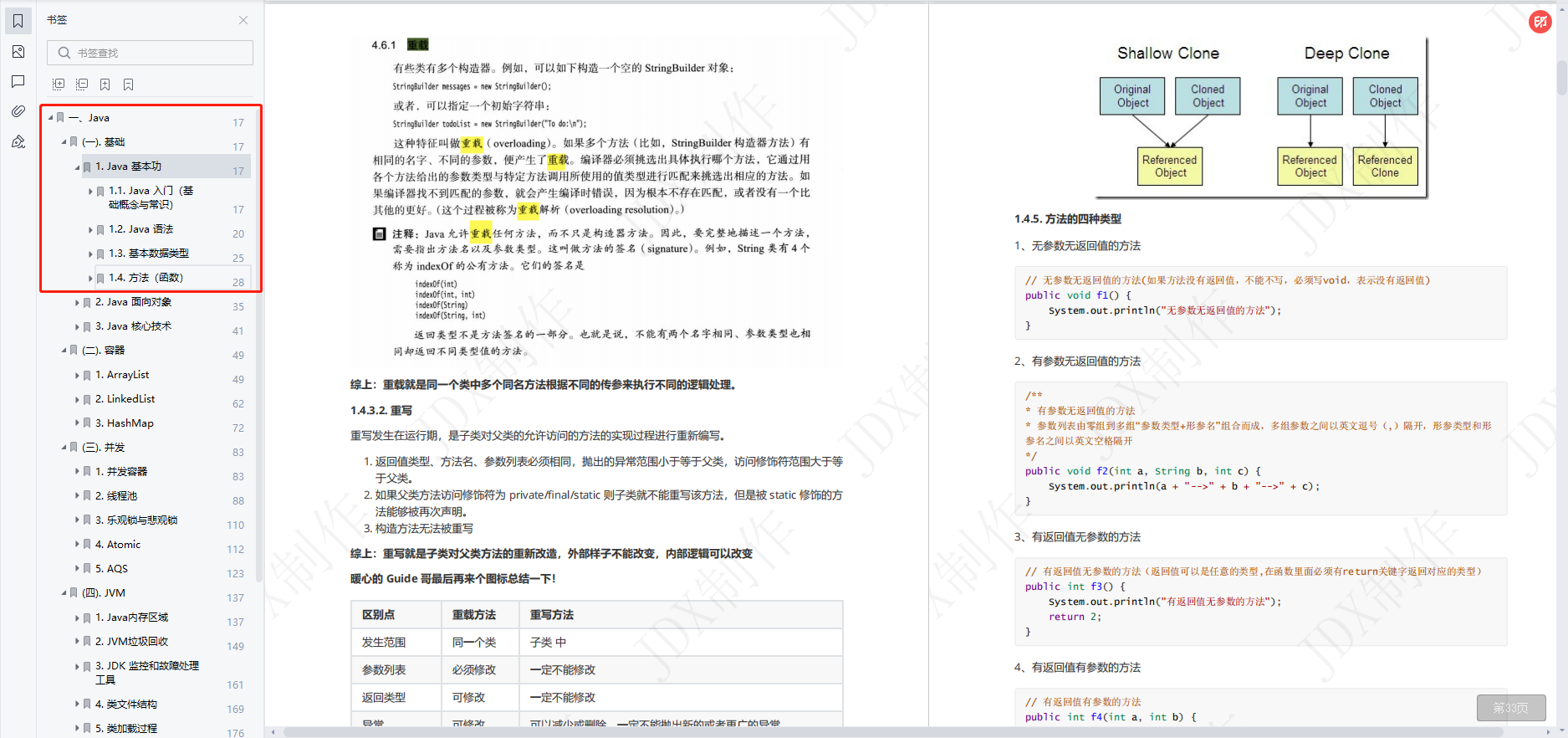当前位置:网站首页>Template: globally balanced binary tree
Template: globally balanced binary tree
2022-07-01 01:52:00 【wind__ whisper】
The so-called globally balanced binary tree , It is a binary tree that is very balanced in the overall situation .
( flee
Preface
This quote is true ( Fog
You can cut some trees into two log The problem is in the list log Time complexity resolution .
Generally speaking, modification can only support Single point modification .
It is more convenient to query and solve chain problems or global problems ( But the subtree seems to be OK )
The constant is relatively large , But it's better than LCT strong .
analysis
Tree sectioning can actually be seen as maintaining a segment tree for each node on the heavy chain , Nodes in the same heavy chain enjoy the same query complexity .
But we found this “ Seemingly balanced ” The data structure of is actually not balanced , Because some nodes may have many light sons , And some nodes may not have light sons at all , The former will be more accessible in most data .
So it leads to Globally balanced binary tree Thought .
Define the weight of a node v a l x val_x valx by All its light sons are sub tree size +1.
Globally balanced binary tree structure and LCT Very similar . First, the original tree is divided into heavy chains , Then maintain a binary search tree for each heavy chain , The interval breakpoint selected here is not the midpoint ( That is the segment tree ), But according to v a l val val Found Weighted center of gravity , And set the father of the root node of the binary search tree as the father of the heavy chain head of the original tree .
( On LCT The difference is , Here the structure of binary search tree is static state Of .)
In my writing, the non leaf nodes of the binary search tree are imaginary points .
For a single point of modification , After modifying its information, you can constantly skip the father update .
For a chain query , It corresponds to the prefix of several heavy chains and the interval of one heavy chain , From the definition of the former, it is not difficult to find that the complexity of each consumption is inevitable siz Double , So it is log n \log n logn Of , The latter is due to the height of the tree log, So it is log n \log n logn Of .
The subtree can find the required node information on the binary search tree of the root node of the subtree and merge it .
Code
P4751 【 Templates 】“ dynamic DP”& Dynamic tree divide and conquer ( Enhanced Edition )
#include<bits/stdc++.h>
using namespace std;
#define ll long long
#define ull unsigned long long
#define debug(...) fprintf(stderr,__VA_ARGS__)
#define ok debug("ok\n")
inline ll read(){
ll x(0),f(1);char c=getchar();
while(!isdigit(c)) {
if(c=='-')f=-1;c=getchar();}
while(isdigit(c)) {
x=(x<<1)+(x<<3)+c-'0';c=getchar();}
return x*f;
}
const int N=2e6+100;
const int inf=1e9+100;
const bool Flag=0;
int n,m;
int tot;
struct matrix{
int x,y;
int a[3][3];
matrix(int X=0,int Y=0,int u=-inf,int v=-inf,int p=-inf,int q=-inf):x(X),y(Y){
a[1][1]=u;a[1][2]=v;a[2][1]=p;a[2][2]=q;
}
};
matrix operator * (const matrix &u,const matrix &v){
matrix res(u.x,v.y);
for(int k=1;k<=u.y;k++){
for(int i=1;i<=u.x;i++){
int tmp=u.a[i][k];
for(int j=1;j<=v.y;j++) res.a[i][j]=max(res.a[i][j],tmp+v.a[k][j]);
}
}
return res;
}
vector<int>e[N];
int a[N],fa[N],siz[N],val[N],hson[N];
int s0[N],s1[N];
void dfs1(int x,int f){
siz[x]=1;fa[x]=f;
for(int to:e[x]){
if(to==f) continue;
dfs1(to,x);
siz[x]+=siz[to];
if(siz[to]>siz[hson[x]]) hson[x]=to;
}
val[x]=siz[x]-siz[hson[x]];
return;
}
struct node{
matrix ans;
int fa,ls,rs;
}tr[N];
int nod[N];
inline void pushup(int x){
tr[x].ans=tr[tr[x].rs].ans*tr[tr[x].ls].ans;
}
int build(int l,int r,int f){
if(l==r){
int x=nod[l];
matrix o(2,2,s0[x],s1[x],s0[x],-inf);
tr[x].ans=o;
tr[x].fa=f;
return x;
}
int cur(0),sum(0),now(0);
for(int i=l;i<=r;i++) sum+=val[nod[i]];
for(int i=l;i<=r;i++){
cur+=val[nod[i]];
if(cur*2<sum) continue;
if(i==r) --i;
now=++tot;
tr[now].fa=f;
tr[now].ls=build(l,i,now);
tr[now].rs=build(i+1,r,now);
break;
}
pushup(now);
return now;
}
inline void ins(int rt,int op){
int f=tr[rt].fa;
if(f){
s0[f]+=op*max(tr[rt].ans.a[1][1],max(tr[rt].ans.a[1][2],max(tr[rt].ans.a[2][1],tr[rt].ans.a[2][2])));
s1[f]+=op*max(tr[rt].ans.a[1][1],tr[rt].ans.a[2][1]);
matrix o(2,2,s0[f],s1[f],s0[f],-inf);
tr[f].ans=o;
}
}
int dfs2(int x,int f){
int top(0);
for(int p=x;p;p=hson[p]){
for(int to:e[p]){
if(to==hson[p]||to==fa[p]) continue;
dfs2(to,p);
}
}
for(int p=x;p;p=hson[p]){
nod[++top]=p;
}
int rt=build(1,top,f);
if(f) ins(rt,1);
return rt;
}
inline void upd(int x,int y){
if(!x) return;
s1[x]=y;
for(int p=x;p;p=tr[p].fa){
if(tr[p].fa&&tr[tr[p].fa].ls!=p&&tr[tr[p].fa].rs!=p) ins(p,-1);
if(p==x) tr[p].ans.a[1][2]=y;
if(p>n) pushup(p);
if(tr[p].fa&&tr[tr[p].fa].ls!=p&&tr[tr[p].fa].rs!=p) ins(p,1),p=tr[p].fa;
}
return;
}
signed main(){
#ifndef ONLINE_JUDGE
freopen("a.in","r",stdin);
freopen("a.out","w",stdout);
#endif
n=read();m=read();
for(int i=1;i<=n;i++) s1[i]=a[i]=read();
for(int i=1;i<n;i++){
int x=read(),y=read();
e[x].push_back(y);
e[y].push_back(x);
}
tot=n;
dfs1(1,0);
int rt=dfs2(1,0),lst(0);
for(int i=1;i<=m;i++){
int x=read()^lst,y=read();
upd(x,s1[x]+y-a[x]);
a[x]=y;
printf("%d\n",lst=max(tr[rt].ans.a[1][1],max(tr[rt].ans.a[1][2],max(tr[rt].ans.a[2][1],tr[rt].ans.a[2][2]))));
}
return 0;
}
practice
SP2666 QTREE4 - Query on a tree IV
The difficulty of this problem is that if a heap is opened for each point to store the maximum distance between all young sons and their fathers , The heap operation is required when modifying , The complexity is just two log 了 .
A magical and small and fresh optimization method is to put the whole tree Third degree , So there is only one young son , No need to open the stack .
Code implementation reference @hehezhou The blog of .
Code
#include<bits/stdc++.h>
using namespace std;
#define ll long long
#define ull unsigned long long
#define debug(...) fprintf(stderr,__VA_ARGS__)
#define ok debug("ok\n")
inline ll read(){
ll x(0),f(1);char c=getchar();
while(!isdigit(c)) {
if(c=='-')f=-1;c=getchar();}
while(isdigit(c)) {
x=(x<<1)+(x<<3)+c-'0';c=getchar();}
return x*f;
}
const int N=4e5+100;
const int inf=1e9;
const bool Flag=0;
int n,m;
#define pr pair<int,int>
#define mkp make_pair
vector<pr>e[N];
int dep[N],tot;
int lson[N],wson[N],siz[N],val[N];
inline void link(int x,int y){
//debug("link: %d %d\n",x,y);
if(!lson[x]) lson[x]=y;
else wson[x]=y;
}
void dfs0(int x,int f){
link(x+n,x);
for(int i=0;i<(int)e[x].size();i++){
if(e[x][i].first==f){
e[x].erase(e[x].begin()+i);
break;
}
}
for(int i=0;i<(int)e[x].size();i++){
dep[e[x][i].first+n]=dep[x];
dep[e[x][i].first]=dep[x]+e[x][i].second;
dfs0(e[x][i].first,x);
}
for(int i=1;i<(int)e[x].size();i++) link(e[x][i-1].first+n,e[x][i].first+n);
if(!e[x].empty()) link(x,e[x][0].first+n);
}
struct node{
int l,r,ls,rs,lmax,rmax,ans,pre,suf,fa;
}tr[N];
void dfs1(int x){
siz[x]=1;
if(wson[x]){
dfs1(wson[x]);
siz[x]+=siz[wson[x]];
}
if(lson[x]){
dfs1(lson[x]);
siz[x]+=siz[lson[x]];
}
if(siz[wson[x]]<siz[lson[x]]) swap(lson[x],wson[x]);
val[x]=siz[x]-siz[wson[x]];
return;
}
int zhan[N];
int build(int l,int r,int f){
if(l==r){
tr[zhan[l]].pre=tr[zhan[l]].suf=zhan[l];
tr[zhan[l]].l=tr[zhan[l]].r=l;
tr[zhan[l]].fa=f;
return zhan[l];
}
int sum(0),cur(0),now(0);
for(int i=l;i<=r;i++) sum+=val[zhan[i]];
for(int i=l;i<=r;i++){
cur+=val[zhan[i]];
if(cur*2<sum) continue;
if(i==r) --i;
now=++tot;
tr[now].ls=build(l,i,now);
tr[now].rs=build(i+1,r,now);
break;
}
tr[now].l=l;tr[now].r=r;
tr[now].pre=zhan[l];tr[now].suf=zhan[r];
tr[now].fa=f;
if(Flag) printf("now=%d (%d %d)\n",now,l,r);
return now;
}
int dfs2(int x,int f){
int top=0;
for(int p=x;p;p=wson[p]) zhan[++top]=p;
if(Flag) for(int i=1;i<=top;i++) printf("%d ",zhan[i]);
if(Flag) puts("\n");
int rt=build(1,top,f);
for(int p=x;p;p=wson[p]){
if(lson[p]) tr[p].ls=dfs2(lson[p],p);
}
return rt;
}
bool ban[N];
#define ls(x) tr[x].ls
#define rs(x) tr[x].rs
inline void pushup(int x){
if(tr[x].l==tr[x].r){
int d=tr[ls(x)].lmax+dep[tr[ls(x)].pre]-dep[x];
if(!ban[x]){
tr[x].lmax=tr[x].rmax=max(d,0);
tr[x].ans=max(tr[ls(x)].ans,0);
}
else{
tr[x].lmax=tr[x].rmax=d;
tr[x].ans=tr[ls(x)].ans;
}
return;
}
else{
tr[x].lmax=max(tr[ls(x)].lmax,tr[rs(x)].lmax+(dep[tr[rs(x)].pre]-dep[tr[ls(x)].pre]));
tr[x].rmax=max(tr[rs(x)].rmax,tr[ls(x)].rmax+(dep[tr[rs(x)].suf]-dep[tr[ls(x)].suf]));
tr[x].ans=max(max(tr[ls(x)].ans,tr[rs(x)].ans),tr[ls(x)].rmax+tr[rs(x)].lmax+dep[tr[rs(x)].pre]-dep[tr[ls(x)].suf]);
return;
}
}
void init(int x){
if(!x) return;
if(tr[x].l==tr[x].r){
init(tr[x].ls);
}
else{
init(tr[x].ls);
init(tr[x].rs);
}
pushup(x);
if(Flag) printf("x=%d lmax=%d rmax=%d ans=%d\n",x,tr[x].lmax,tr[x].rmax,tr[x].ans);
return;
}
signed main(){
#ifndef ONLINE_JUDGE
freopen("a.in","r",stdin);
freopen("a.out","w",stdout);
#endif
tr[0].lmax=tr[0].rmax=tr[0].ans=-inf;
n=read();
for(int i=1;i<n;i++){
int x=read(),y=read(),w=read();
e[x].push_back(mkp(y,w));
e[y].push_back(mkp(x,w));
}
tot=n+n;
dfs0(1,0);
dfs1(1);
int rt=dfs2(1,0);
for(int i=n+1;i<=tot;i++) ban[i]=1;
init(rt);
if(Flag) for(int i=1;i<=tot;i++) printf("i=%d dep=%d\n",i,dep[i]);
m=read();
char c;
for(int i=1;i<=m;i++){
scanf(" %c",&c);
if(c=='A'){
if(tr[rt].ans<0) puts("They have disappeared.");
else printf("%d\n",tr[rt].ans);
}
else{
int x=read();
ban[x]^=1;
for(;x;x=tr[x].fa) pushup(x);
}
if(Flag) init(rt);
if(Flag) puts("");
}
return 0;
}
/* 5 1 2 -8 2 3 -5 1 4 -7 4 5 -6 */
边栏推荐
- [fundamentals of wireless communication-15]: illustrated mobile communication technology and application development-3-overview of digital communication 2G GSM, CDMA, 3G wdcma/cdma200/td-scdma, 4G LTE
- P6773 [NOI2020] 命运(dp、线段树合并)
- There is no future to be expected. It is just the last fantasy of a migrant worker before he dies
- 【2022年】江西省研究生数学建模方案、代码
- Log4j2 threadcontext log link tracking
- opencv -- 笔记
- KS009基于SSH实现宠物管理系统
- [Office PDF] PDF merging and splitting will free us from the functional limitations of paid software, OK
- Ks009 implementation of pet management system based on SSH
- Microbial safety and health, what is biological treatment?
猜你喜欢

The whole process of AS400 API from zero to one

Qt5 mvc: revealing the secrets of data visualization

Mathematical knowledge: finding combinatorial number III - finding combinatorial number

Gin configuration file

3500字归纳总结:一名合格的软件测试工程师需要掌握的技能大全

3dsmax plug-in development traversal node object and object acquisition and inode transformation matrix description

Batch import of Excel data in applet

Analysis on user behavior loss of data exploration e-commerce platform

Understanding and application of Qt5 layout in creation

45 year old programmer tells you: why do programmers want to change jobs? It's too true
随机推荐
The whole process of AS400 API from zero to one
Some items of OCR
【agora】用户管理
[JS adds attributes to elements: setAttribute; classlist.remove; classlist.add;]
With one-stop insight into industry hot spots, the new function "traffic market" of feigua data station B is launched!
[fundamentals of wireless communication-15]: illustrated mobile communication technology and application development-3-overview of digital communication 2G GSM, CDMA, 3G wdcma/cdma200/td-scdma, 4G LTE
Selenium经典面试题-多窗口切换解决方案
Mathematical knowledge: finding combinatorial number III - finding combinatorial number
AS400 大厂面试
Log4j2 ThreadContext日志链路追踪
[proteus simulation] Arduino UNO +74c922 keyboard decoding drive 4x4 matrix keyboard
Gin configuration file
软件测试的可持续发展,必须要学会敲代码?
模板:全局平衡二叉树
[无线通信基础-15]:图解移动通信技术与应用发展-3- 数字通信2G GSM、CDMA、3G WDCMA/CDMA200/TD-SCDMA、4G LTE、5G NR概述
Creating ASCII art with C #
【毕业季·进击的技术er】--毕业到工作小结
医疗HIS行业短信发送解决方案
Some essential differences
2022年最新csdn涨薪技术栈-app自动化测试概述